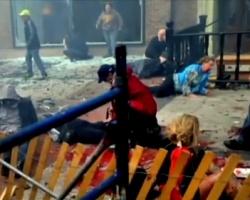In the wake of the Boston Marathon tragedy, many wonder whether the ubiquity of camera-equipped smartphones helped or hurt in the aftermath. People were horrified by some of the images taken at Boston, and many wondered whether they were a gross invasion of privacy. Yet these same images were scoured for clues to who perpetrated the attack—and may have helped authorities track down the culprits.
On Reddit, countless amateur sleuths examined suspicious people in crowd-sourced shots—the picture of one of whom landed on the front page of the New York Post. He was, as it turned out, completely innocent: “It’s the worst feeling I can possibly feel,” Salah Barhoun, the subject in the photo, told ABC News. “I’m only 17.” Yet surely the FBI researched many of these crowd-sourced photos itself: More information in cases such as this is always better.
“We have become Homo documentis, Man the Recorder,” writes James Poniewozik for Time. “It’s almost unimaginable that a spectacular public attack could take place and the perpetrator not be captured, somewhere in the gigabytes upon gigabytes of digital keepsakes.” New devices such as Google Glass heightens the plusses and minuses of recording so much of our lives.
Poniewozik writes: “…It’s probably too much to imagine that it, or any technology, would ever discourage mass murder. When someone kills again, it may be that there will be more eyes on them. That could be a good thing, but not a good without a price. The rest of us may find ourselves, whether we want to see the horrors tied in the cloud to a network of eyes that never close.” (Time)
Paul Asay has covered religion for The Washington Post, Christianity Today, Beliefnet.com and The (Colorado Springs) Gazette. He writes about culture for Plugged In and wrote the Batman book God on the Streets of Gotham (Tyndale). He lives in Colorado Springs with wife, Wendy, and two children. Follow him on Twitter.

